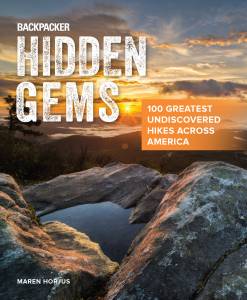
While we wait out this period of uncertainty and try to find armchair travel thrills elsewhere, why not start planning to sign up for a dream trip that you have to wait for anyway? Some of the country’s most coveted adventures require securing permits well in advance, and with this season suspended for now, you can use this time to prepare for next year. So mark the permit application dates below in your calendar and start thinking about trip logistics, because these spots are some of the hardest to snag.
Kalalau Trail

Kauai, Hawaii
The Na Pali Coast, touted as one of the most breathtaking stretches of shoreline in the world, is best experienced via the Kalalau Trail, which provides the only land access to the area. Starting at Haena State Park, the initial two miles will see you to Hanakapiai Valley, a popular day hike. But to go beyond and complete the 22-mile out-and-back trip, visitors must apply for a permit in advance through Hawaii’s Department of Land and Natural Resources reservation system. The state issues 60 permits a day that allow for up to five days of camping. Spots often fill up a year in advance.
Long Range Traverse

Newfoundland and Labrador, Canada
The Long Range Traverse, in Newfoundland and Labrador’s Gros Morne National Park, is so unmarked and remote that the park service requires visitors to pass an orientation and navigation test before they head out. The 22-mile, off-trail traverse starts with an hourlong boat ride on Western Brook Pond into the fjords before climbing 1,800 feet from sea level to the plateaus. Most hikers take three to four days to complete it. You’ll need a reservation, made in advance, before you go. To minimize traffic, a maximum of three parties (with up to four people per group) are allowed on the route each day. Gros Morne Adventures offers guided four-day backpacking trips of the Long Range Traverse (from $1,035) if you want to skip the navigating and permitting processes.
Denali Park Road

Alaska
This scenic 92-mile stretch of roadway, which cuts through Denali National Park and offers views of North America’s highest peak, is normally closed to private vehicles; past mile 15, you can only access it by bus, bike, or on foot. But for four days in September (usually beginning the second Friday after Labor Day, but this year’s event is tentative), those lucky few with permits can drive the road and hike from various trailheads off it. Enter the lottery for this in May—you’ll have about a 14 percent chance of scoring a spot—and check the results in June. If you didn’t get a permit and still want to venture in, Denali Outdoor Center rents bikes and offers a bus-in, ride-out tour.
The Wave

Utah and Arizona
The Wave is an undulating red-sandstone canyon in the Paria Canyon–Vermilion Cliffs Wilderness. The trailhead is in Utah, and the rock formation and its five-mile round-trip hike cross the border into Arizona. To get here, you’ll need a very difficult-to-secure permit from the Bureau of Land Management—only 20 people are allowed in each day. Ten of those permits are distributed via lottery four months in advance; the other ten are reserved for first-come, first-served walk-ins at the Grand Staircase–Escalante Visitor Center in Kanab, Utah. Around a dozen tour operators authorized by the BLM lead hikes into the Wave, but you’ll still need to snag a permit on your own. No luck? Head to White Pocket, a region of similarly colorful Navajo sandstone formations 46 miles east, for your geology fix and Instagram snap.
Boundary Waters Canoe Area Wilderness

Minnesota
Over a million acres in size, the Boundary Waters Canoe Area Wilderness has 1,200 miles of canoe routes, 2,000 campsites, and nearly 200 miles of hiking trails throughout Minnesota’s Superior National Forest, a four-hour drive north of Minneapolis. But if you want to explore this area overnight between May and September, you’ll need to request a permit online in advance—and there’s a limited number available from each of the 63 entry points on any given day. The number of walk-up permits available each day varies; sometimes stations have dozens, sometimes they’ll have just one. Permits become available on the last Wednesday of January at 9 A.M. Central Time.
Another option is to visit during the colder, less crowded months of October to April, when you can pick up self-issued authorization at entry points and Forest Service stations. Or Wilderness Inquiry offers guided five-day canoe and camping trips from June to September—permit included (from $595).
Culebra Peak

Colorado
If you’re summitting all 58 of Colorado’s famed fourteeners, you’ll eventually hit 14,047-foot Culebra Peak, in the Sangre de Cristo Mountains. The catch? This peak is on private land and has no designated trail. You have to make a reservation in advance with Cielo Vista Ranch, which opens up bookings for next year on December 1. The owners allow a maximum of 20 hikers per day access to the peak on Fridays, Saturdays, and Sundays between January and July (the peak is closed to climbers from August through December, during hunting season). Camping for hikers on the property is free the night before your climb, but the ranch charges a fee ($150 per person) for your climbing reservation.
Middle Fork of the Salmon

Idaho
The Middle Fork of the Salmon River, in the Frank Church–River of No Return Wilderness, is one of the most stunning and in-demand raft trips in the U.S., which means you’ll need a permit to be on the water year-round. To paddle this 104-mile stretch on your own, apply for the lottery between December 1 and January 31 and wait for the announcement of winners in February. Be sure to manage your expecations: only one out of every 45 applicants scored a permit in 2020.
You can bypass the process by booking a commercial raft trip and having your outfitter get it for you. Adventure Sun Valley does six-day guided trips (from $1,950). If you’re set on paddling your own rig, the company also offers supported trips, permit included.
The Enchantments

Washington State
Part of the Alpine Lakes Wilderness, 100 miles east of Seattle, the Enchantments area of the central Cascades is filled with glaciated granite peaks, high-alpine lakes, and rugged trails. Day hikes and long runs are doable but challenging, with thousands of feet of vertical gain. The good news is you can tackle a day hike or a run with a free permit self-issued at the trailhead.
However, if you want to camp overnight in the area between May 15 and October 31 in 2021, you’ll need a paid overnight reservation from the Forest Service, which operates on a lottery system run from February 15 to 29. If you don’t win one, try your chances with a same-day permit, issued in limited quantities in person at the ranger station in Leavenworth.
John Muir Trail

California
With this year’s thru-hiking season suspended, the Pacific Crest Trail Association, which oversees the John Muir Trail, has stated that new or pending permits are not currently being approved and no decision has been made yet on whether 2020 permits will be carried over to 2021. Coupled with the existing demand, expect it to be even tougher to snag a permit next season to thru-hike the 211-mile trail, which crosses through some of central California’s most striking high country.
If you’re tackling the trail southbound from Yosemite, you’ll need a permit from Yosemite National Park, which is processed via a lottery 24 weeks before your designated start date. Or you can try your luck for last-minute availability in person at a permit station in the park—of the daily quota per trailhead, 40 percent are available on a first-come, first-served basis at 11A.M. the day before your hike.
If you’re hiking the trail northbound from Mount Whitney, you’ll need a permit from Inyo National Forest. Set a calendar notification to enter the lottery between February 1 and March 15, 2021, and if you don’t land a ticket, try again on April 1 for the remaining dates. Don’t want to deal with the permitting process? Southern Yosemite Mountain Guides leads backpacking trips (from $3,445) on the trail, and it’ll handle the permit for you as well as remote food drops and transportation.
Havasu Falls

Arizona
Havasu Falls, located 50 miles west of Grand Canyon National Park on land administered by the Havasupai Tribe, is reached via a 10-mile one-way trail. Camping overnight in the designated campground (day hikes aren’t allowed) requires getting a reservation from the tribe in advance. Those are allotted on February 1 each year, and typically all the permits are snatched up in the first several hours. It’s worth the hustle: you’ll be treated to a red-rock canyon that ends at waterfalls cascading over limestone cliffs into turquoise pools. The Havasupai Tribe currently isn’t allowing any outside commercial tours or guiding outfitters to lead trips to the falls.
Half Dome Cables Route

California
Before the National Park Service began a lottery system in 2010, an average of 1,200 people would climb the Half Dome at Yosemite every day. Since then demand has only increased—in 2019, the preseason lottery saw 36,098 applications for one of 300 permits (225 for day hikers and 75 for backpackers) during the 130-day window. Your next chance to make the trip in an organized fashion is 2022, as you’ll have to cast your bid during the preseason application period, which only runs March 1 to 31. Hikers can pick up to six dates, and winners are notified by mid-April. If you’re intent on hitting Half Dome in 2021, give the daily lottery a go; it hands out around 50 permits during the season, which usually runs from Memorial Day to Columbus Day. The 14-to-16-mile hike, which gains 4,200 feet of elevation, ends with a 400-foot cable-assisted climb to the summit.
Looking For More Permitted Adventures?
A savvy backpacker from Colorado put together a handy calendar of the more popular permitting windows and dates to places like the Grand Canyon, Mount Whitney, and Yellowstone.







/cdn.vox-cdn.com/uploads/chorus_asset/file/16282146/Profile___Pierre_Lagarde.png)
/cdn.vox-cdn.com/uploads/chorus_asset/file/16282147/Deviation_Page.png)
/cdn.vox-cdn.com/uploads/chorus_asset/file/16282149/Browse_Journals.png)
/cdn.vox-cdn.com/uploads/chorus_asset/file/16282180/Screen_Shot_2019_05_16_at_3.59.26_PM.png)
/cdn.vox-cdn.com/uploads/chorus_asset/file/16282150/Browse.png)
/cdn.vox-cdn.com/uploads/chorus_asset/file/16282152/Browse__Status_Updates.png)














/cdn.vox-cdn.com/uploads/chorus_asset/file/15969718/jbareham_190315_3295_0012.jpg) Photo by James Bareham / The Verge
Photo by James Bareham / The Verge

/https%3A%2F%2Fblueprint-api-production.s3.amazonaws.com%2Fuploads%2Fcard%2Fimage%2F872785%2Ff066ba6b-1aee-4389-85e0-b8f59077b650.png)












/https%3A%2F%2Fblueprint-api-production.s3.amazonaws.com%2Fuploads%2Fcard%2Fimage%2F797832%2F1b30b2ba-8a18-44b9-b87d-e13c97dd28a5.jpeg)

/cdn.vox-cdn.com/uploads/chorus_asset/file/11578195/god1.jpg) Image: Cook & Becker.
Image: Cook & Becker.
/cdn.vox-cdn.com/uploads/chorus_asset/file/11578215/god4.jpg) Image: Cook & Becker.
Image: Cook & Becker.
/cdn.vox-cdn.com/uploads/chorus_asset/file/11578217/god21.jpg) Image: Cook & Becker.
Image: Cook & Becker.
/cdn.vox-cdn.com/uploads/chorus_asset/file/11578221/god22.jpg) Image: Cook & Becker.
Image: Cook & Becker.
/cdn.vox-cdn.com/uploads/chorus_asset/file/11578225/god28.jpg) Image: Cook & Becker.
Image: Cook & Becker.


/cdn.vox-cdn.com/uploads/chorus_asset/file/10414519/unnamed__2_.jpg) Image: Amazon
Image: Amazon

/cdn.vox-cdn.com/uploads/chorus_asset/file/10388933/Screen_Shot_2018_03_08_at_9.03.00_PM.png)

/cdn.vox-cdn.com/uploads/chorus_asset/file/10186201/pocketsprite_hands_fade_no_watermark_png_project_body.jpg)
/cdn.vox-cdn.com/uploads/chorus_asset/file/10186205/pocketsprite_open_no_watermark_png_project_body.jpg)